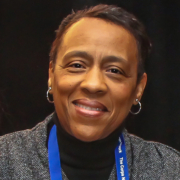
Sherman Creek Park, Swindler Cove
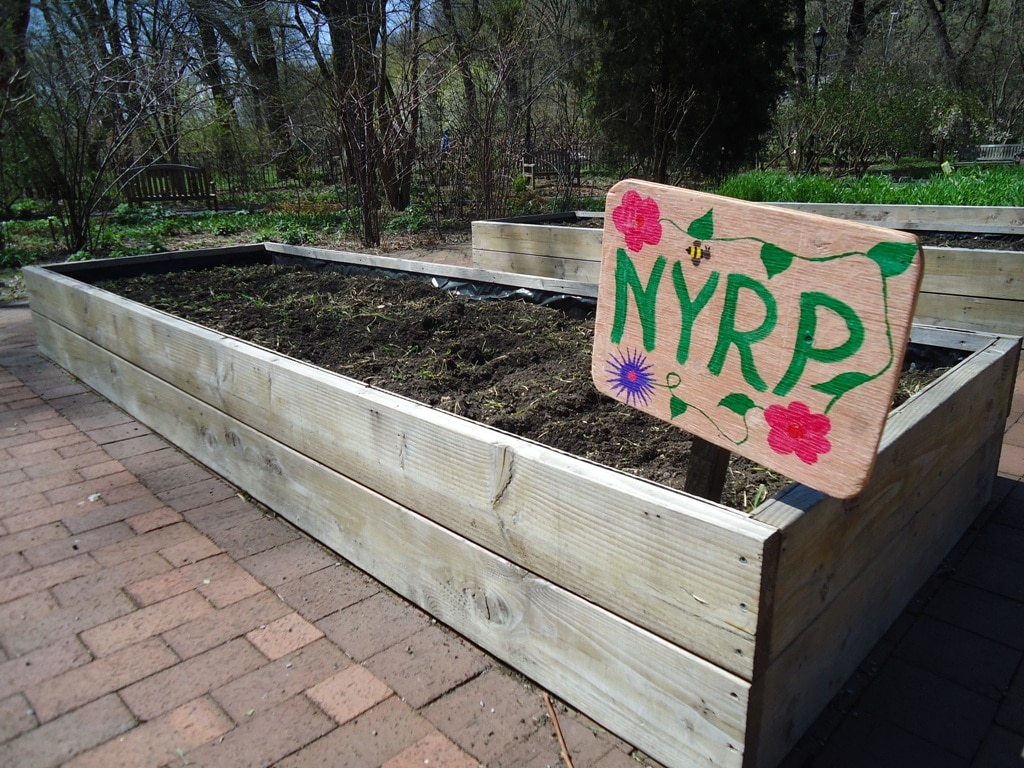
It’s 10 a.m. and a group of elementary school students has just arrived at Sherman Creek Park for a nature presentation. The students and their teachers gather at a semi-circle of picnic benches and wait as Shawn Walton and Michelle Mar pass out binoculars.
Shawn and Michelle are both AmeriCorps members with New York Restoration Project; a non-profit dedicated to bringing green spaces to underserved communities in New York City’s five boroughs. Shawn and Michelle, who both started at NYRP in January 2013, are environmental educators. Along with Mya Jenkins, the NYRP Education Manager, Shawn and Michelle work to develop educational activities and lead students on nature walks through Sherman Creek Park, located along the Harlem River.
Though the first couple months of their AmeriCorps service were spent planning activities and creating informational materials, Shawn and Michelle now spend their days in the park with visiting students. They usually teach two classes a day, three to four times a week.
Each class begins with Mya, Shawn and Michelle welcoming students to the park and showing them several thought provoking items, like preserved insects or dried fungus. Then the binoculars are distributed and the nature walk begins. Sherman Creek Park is full of flowers and budding trees this time of year, but Swindler Cove hasn’t always looked this way. In fact, those who are familiar with the region’s history know it’s quite extraordinary that a park can now exist here.
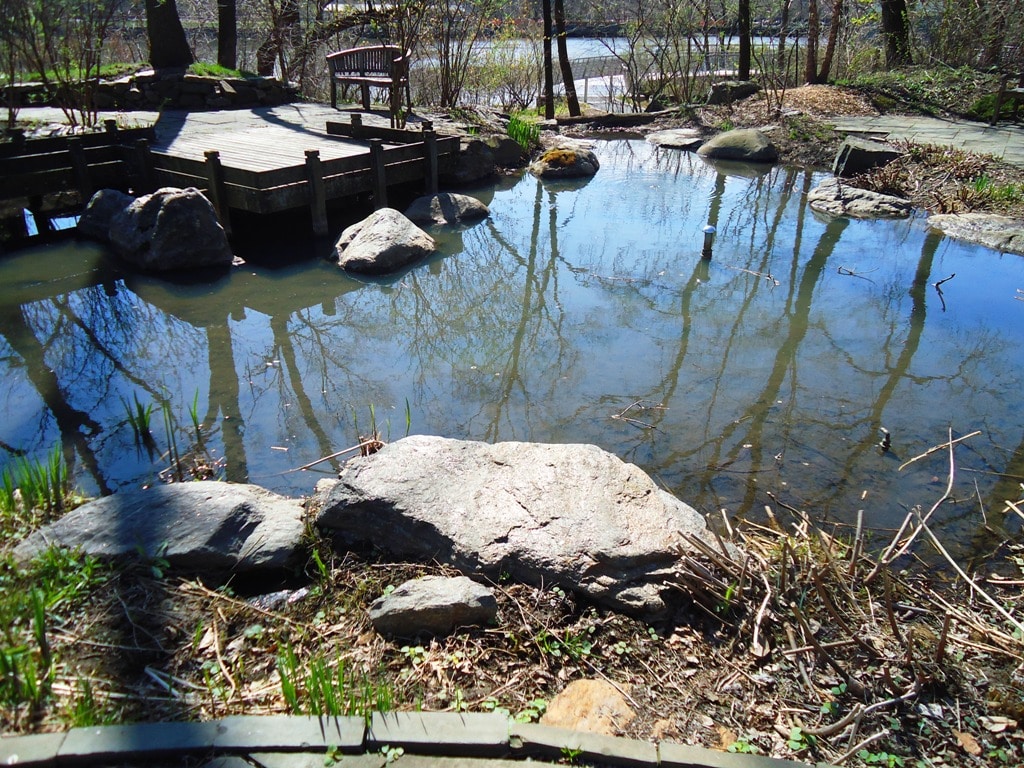
The pond in Sherman Creek Park
Back in the 1990s, NYRP helped develop a garden at P.S. 5, an elementary school located on what is now the edge of Sherman Creek Park. At the time, the area that eventually became the park was used as an illegal dump. The ground was heaped with trash, car parts, and tangled masses of invasive vines. The waterfront was lined with collapsed boathouses and debris. NYRP saw potential in this forgotten part of Harlem and began the process of transforming the dump into a useable green space.
From about 1996 to 1999, NYRP hauled away trash and removed the thick cover of vines. The next few years were spent restoring the land and the waterfront to their natural beauty by reintroducing native plants. The five-acre park now includes an urban forest, wetlands, a vegetable garden, a freshwater pond, and a boathouse – all connected by a wide, well-maintained trail. NYRP is now expanding the reclamation efforts by improving a longer stretch of the shoreline. One of their bigger projects involved planting 200 flowering cherry trees between the river and Harlem River Drive.
Back with the class, Mya leads the students to the park’s freshwater pond and quizzes them about the difference between shallow water and deep water. She encourages the students to look for the tadpoles and pumpkin seed fish swimming in the sunny parts of the pond. Then Michelle takes over and asks the students to identify other kinds of animals that might like living in the pond: Squirrels? Turtles? Ants? 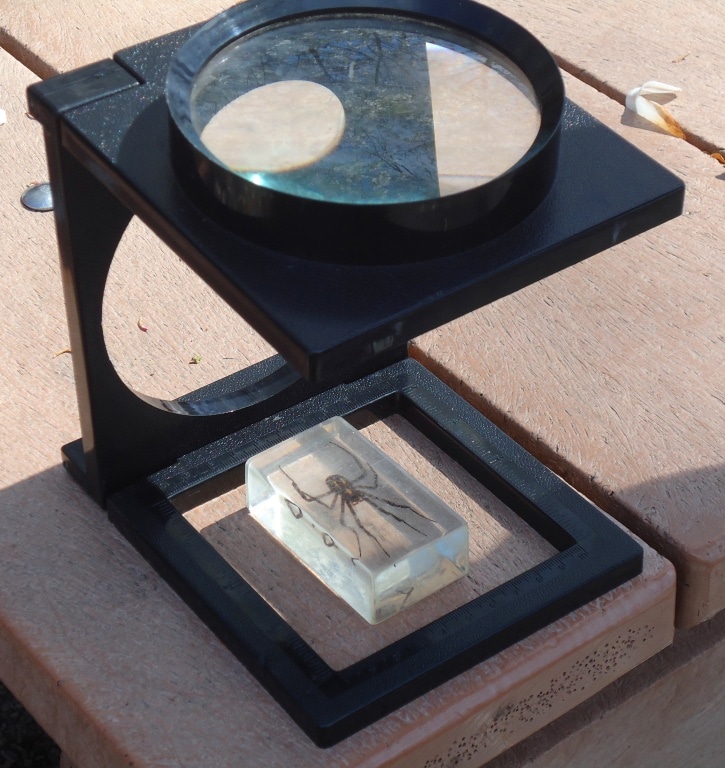
The class works its way through the park, pausing at the waterfront to look at the ducks and cormorants. They stroll through the urban forest to see what’s in bloom and to look for birds. They stop in the garden and gather around the 18 raised beds to learn about where fruits and vegetables come from. Shawn and Michelle love seeing how excited the kids get when they see one of the park’s resident Red-tailed Hawks, or when they watch the snapping turtle swimming in the pond, or when they see food they recognize from the grocery store growing right out of the ground.
In the process of teaching classes, developing activities for visiting students, and helping maintain the park, both Shawn and Michelle say they’ve learned a great deal. Shawn learned that the Harlem River is technically an estuary, not a river. Michelle has picked up gardening tips and learned how to identify many new birds. She hopes to one day have her own vegetable garden.
The nature walk ends back at the picnic benches where Shawn has set up a collection of preserved insects and spiders under magnifying glasses. As the class troops back up to the tables, Michelle stops to get a better look at a large water bird she’s just noticed bobbing in the river.
“What is that?…I’m always looking things up in this job. I’m always learning new things.”
Highbridge Park

It’s fair to say that most people think of the Brooklyn Bridge when they hear about New York City’s oldest bridge. Not many people know that High Bridge, crossing the Harlem River to connect the Bronx to Upper Manhattan, was completed in 1848 – over twenty years before construction on the Brooklyn Bridge even began.
Probably part of the reason why High Bridge is often forgotten is because it’s a footbridge. Part of the reason is because it fell into disrepair and has been closed to traffic since the 1970s. From the ‘70s to the ‘90s, the bridge went neglected because its western end was the derelict Highbridge Park.
At the turn of the twentieth century, Highbridge provided upper middle-class New Yorkers with a place to go horseback riding and rowing. However, with the development of Washington Heights and the construction of the Harlem River Drive, Highbridge became dirty and less accessible. The forgotten park soon became a place for illegal activity. Squatters constructed shacks and people came to deal in drugs and prostitution. Highbridge’s 119 acres were soon littered with trash and the remnants of stolen cars. The park’s grass, plantings, and many of its trees died as uncontrolled vines overtook them.
In the mid to late 1990s, New York Restoration Project (NYRP) reclaimed the Swindler Cove waterfront and created Sherman Creek Park. As development of Sherman Creek progressed, NYRP expanded their reclamation efforts to include the northern end of Highbridge, located just on the other side of the Harlem River Drive. When NYRP started work in Highbridge, it was so overgrown and littered that most of the pathways were buried and needed to be excavated. NYRP removed nearly 500 tons of trash from the park in 1996 alone.
After clearing the trash and the shells of stolen cars, NYRP then worked with the New York City Parks Department to begin restoration of Highbridge by beautifying the northern entrances. Bit by bit, they then removed the invasive vines and helped plant native trees, flowers, and shrubs. Jason Smith, the NYRP Campus Regional Director who oversees Highbridge, estimates that some 3,000 to 4,000 trees have been planted in the park since the late 1990s. The reintroduction of these native plants was excellent for wildlife; the park is now home to hawks, field mice, snakes, squirrels, and many different bird species. NYRP staff members who have seen Highbridge through its transformation agree that every year they see more and different kinds of birds.
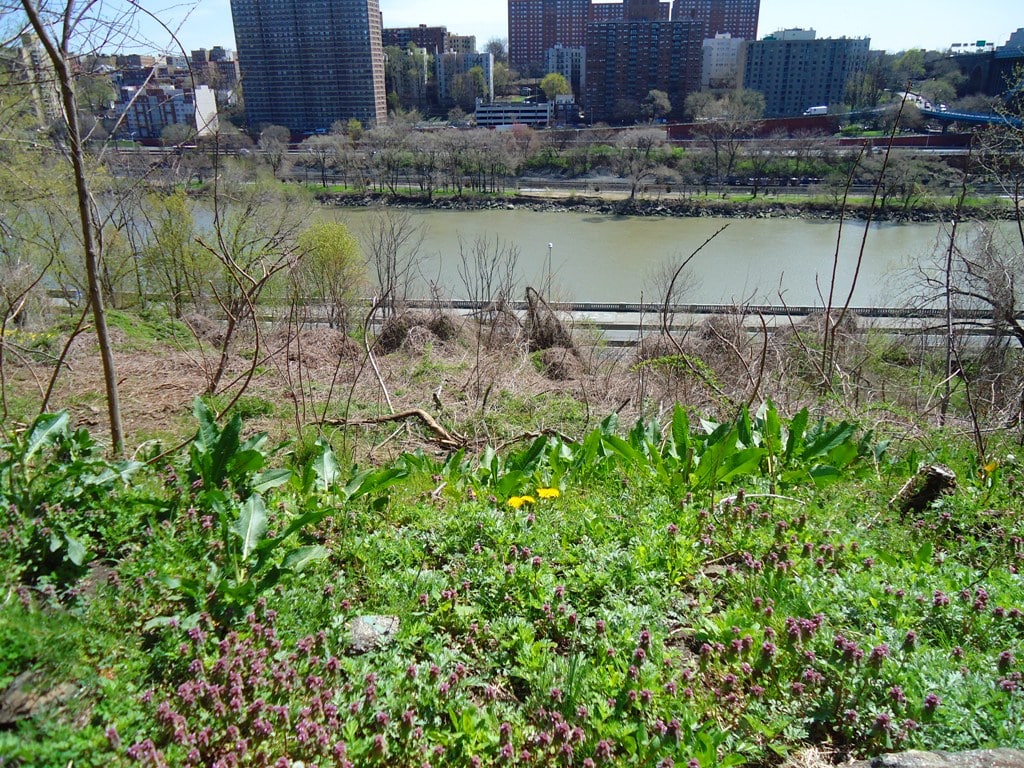
Stages of restoration at Highbridge Park. In the background is an area of vines that NYRP staff and Corpsmembers have not yet had a chance to remove. These parts of the park represent what the entire area used to look like before NYRP’s intervention.
Work on the northern end of the park continues to this day. With the help of volunteers, a group of AmeriCorps members and NYRP staff members maintain what’s already been reclaimed and continue to pull out invasives. Tony Lewis, NYRP’s Highbridge Area Supervisor, generally oversees two AmeriCorps members in the winter and three members in the Spring. At any given time, there are about 20 NYRP AmeriCorps members up in Northern Manhattan. Tony started at NYRP as a Corpsmember after he was inspired by the before-and-after pictures of Highbridge. He says that many of the park’s current volunteers come for a similar reason.
“We started just by prettying up the edges to invite people in,” said Tony. “Now they see how we’ve cleaned up the area and they’ve become interested. They’ve become very dedicated, helping us pull out vines and invasives.”
Some parts of the northern end of the park have what Tony likes to refer to as “DVS”: Dead Vine Syndrome. Many native trees still struggle to survive under the gnarled dead branches of porcelain berry and other fast-growing vines. This is where the attention of AmeriCorps members is essential to the park’s success.
“If you couldn’t tell, I’m very dedicated to my AmeriCorps members,” said Tony.
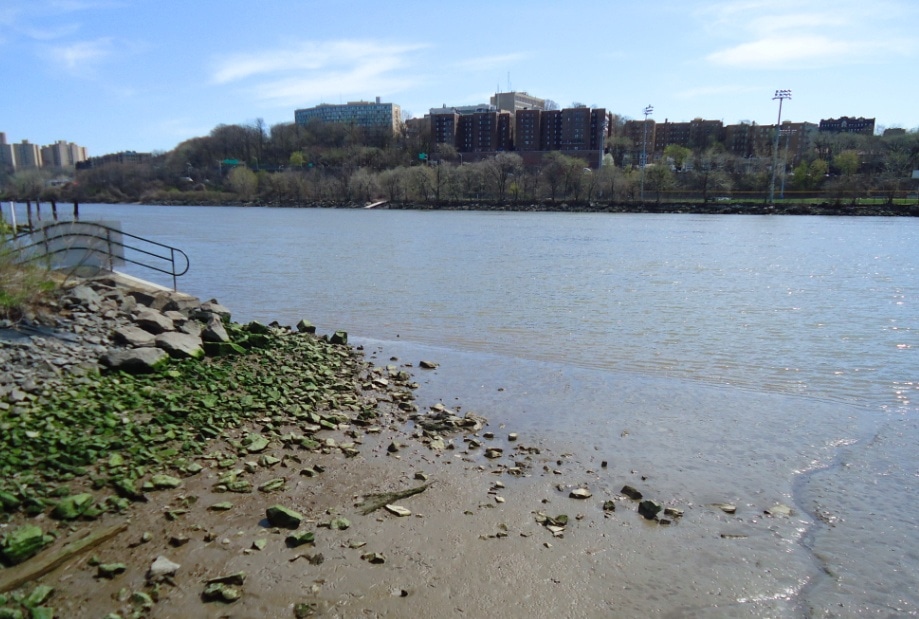
A restored area of the Harlem River along Sherman Creek Park
Tony not only remembers the names of every AmeriCorps member that’s served under him at Highbridge; he remembers which specific plants they added to the park’s landscape. He fondly refers to certain plants as “so-and-so’s rose bush” or “so-and-so’s ferns.”
Kennedy is one of the AmeriCorps members who currently serves as part of the Highbridge-Sherman Creek Park urban forest crew. He used to work as a security guard at the Con Edison building located opposite Sherman Creek Park on the Harlem River. Ken was so intrigued by the restoration work happening in the park that he went down and spoke with someone from NYRP who was collecting litter along the water’s edge. He liked the idea of working outside and eventually applied to the program. These days, Ken is Tony’s “right hand man.” He’s been taking classes at the New York Botanical Garden and hopes to eventually pursue a career in horticulture.
In addition to gardening and forestry work, AmeriCorps members and NYRP staff help manage the park’s volunteers. In Sherman Creek, many volunteers help with the children’s garden or with the park’s compositing effort, which involves recycling food waste from a local farmers’ market.
“The composting is just part of our main goal to show what sustainable, environmentally friendly land management can look like in a low-income community,” said Jason Smith.
One of NYRP’s biggest goals right now is to improve the forest cover in Highbridge. Many branches and several large, old trees came down last year during Hurricane Sandy and preceding storms. The organization plans to plant several hundred new trees this fall. Within the past year they planted about 2,500 trees as part of the development of the Highbridge Park Mountain Bike Trail, the only one of its kind in Manhattan. Though NYRP did not build the trail, they have worked with the local volunteers and BMX riders who did in order to protect and promote the growth of the new trees planted on the trail’s eastern edge.
Mountain bike riders are certainly a new addition to the park, but most of Highbridge’s patrons are newcomers, too. Jason, who has worked at Highbridge and Sherman Creek long enough to remember when the park was too dangerous for recreational use, has seen enormous, positive changes in park patronage.
“Families use the park now. You see children and people walking dogs,” said Jason. “When I started, you would have never seen that happen.”
Northern Manhattan Community Gardens
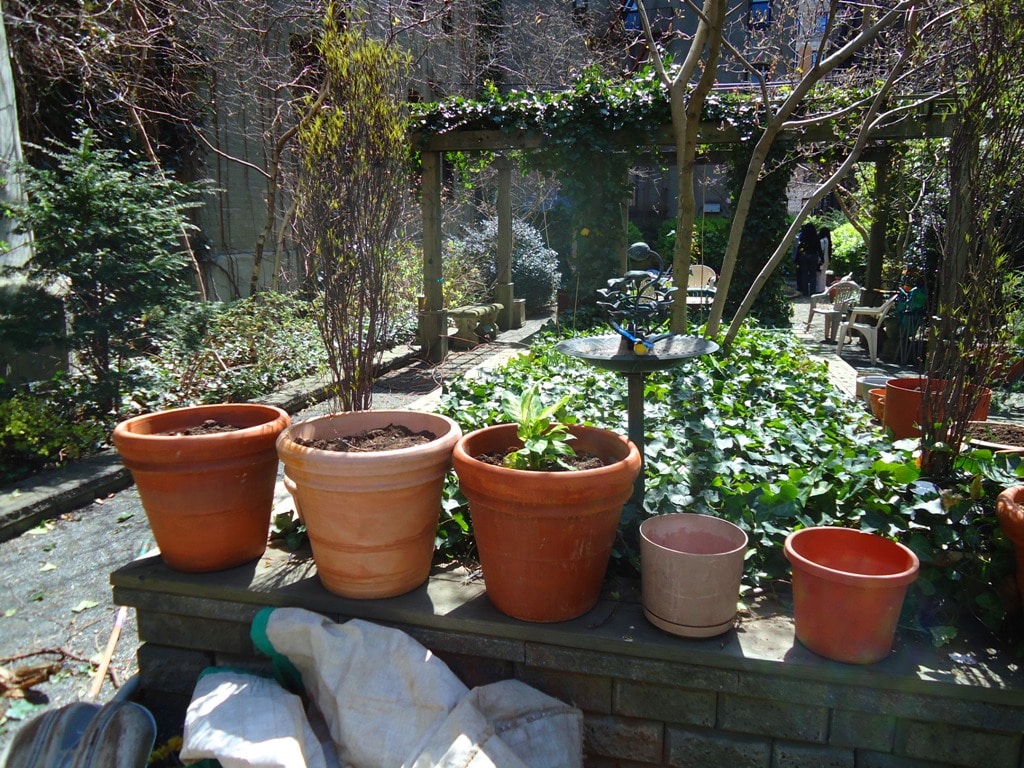
Maggie’s Garden
Some of the parks managed by NYRP range over 100 acres. But there are many NYRP-managed properties that cover just a couple thousand square feet. These are the NYRP Community Gardens. There are 11 gardens in Upper Manhattan, nine of them located in East Harlem.
Some of the gardens are so small and shaded by trees that they could go unnoticed by someone unfamiliar with the neighborhood. To those who live in the community, however, the gardens serve as safe, welcoming places to enjoy some fresh air and meet with friends and family. Many of the gardens have seating areas, gazebos, and grills, making them perfect places for celebrations and summertime barbeques.
No two gardens are exactly alike. Barry Elmore, NYRP’s Manhattan Zone Gardener, points out that many of the gardens were established community gathering places well before NYRP assumed management responsibility. In the late 1990s, over 100 community gardens throughout New York City were scheduled for auction. To save these green spaces from development, NYRP took title to 52 of the gardens and established the New York Garden Trust. The Trust for Public Land took control of most of the remaining gardens. NYRP now partners with community gardeners to ensure that these precious plots remain useable green spaces for everyone in the neighborhood to enjoy.
Some of the Upper Manhattan gardens have raised beds for community members to grow their own produce. Some of the well-shaded gardens are almost entirely paved and act more as courtyards than places to grow fruits and vegetables. It is the job of NYRP staff members and AmeriCorps members to make sure the gardens stay clean, the paths stay clear, and the plantings stay healthy and free of weeds. Barry noted that some of the gardens have been looked after by dedicated community members for many years. NYRP works with these caretakers to make sure the gardens get the appropriate attention and resources.
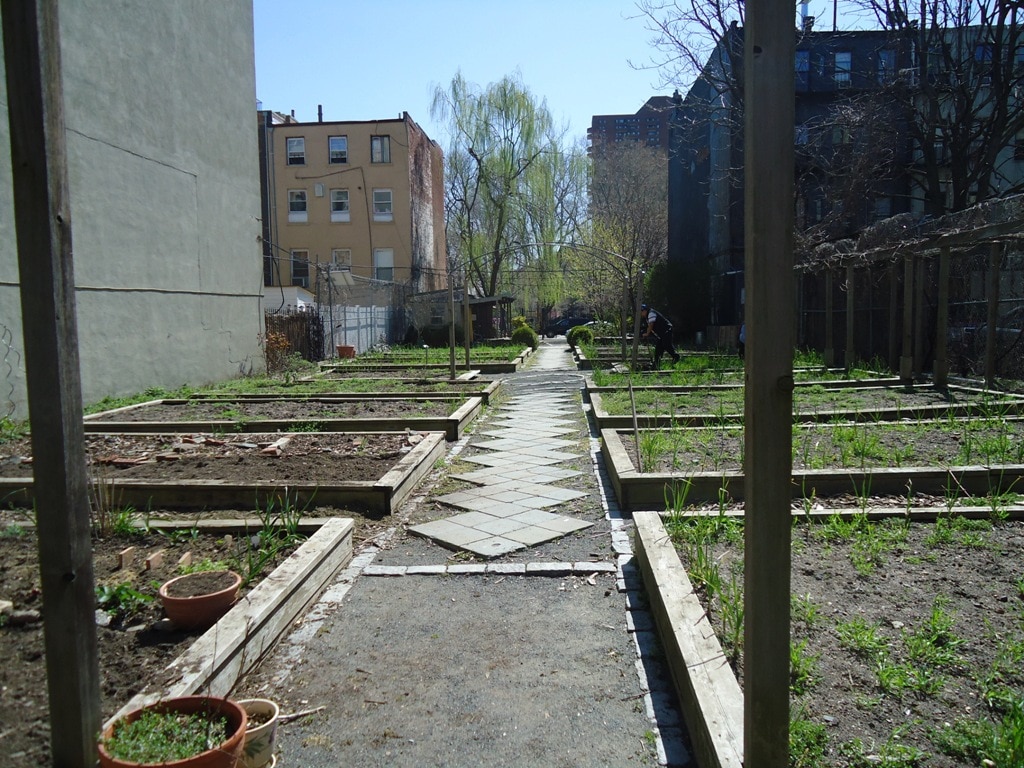
Rodale Garden
For Barry and the AmeriCorps members who help in the gardens, Monday and Friday are generally days for picking up litter and maintaining greenhouse plants. Tuesday, Wednesday, and Thursday are when they can give the gardens more specialized attention: they prune shrubs and trees, plant donated flora, use the bag-snagging device to remove plastic bags from trees, and work with partnering organizations to build raised planting beds and help with events.
A few of the Upper Manhattan gardens are sponsored by major companies or reflect certain themes. The103rd Street Garden, sponsored by Disney, includes a basketball court and playground. The tiny Wicked Garden, based off the Broadway musical, features a yellow brick road and other Oz-inspired fixtures. The Family Garden, commonly known as the Tiffany Garden because of its sponsorship by the iconic American jewelry company, features a shaded front courtyard gated by a wrought iron fence.
One small sign of how the community has invested in the Tiffany Garden and others is how people will sometimes hide cat food under the bushes for the neighborhood strays. At the Tiffany Garden, located just around the corner from Raos, a famous Italian restaurant, Barry says the cats sometimes eat like kings, receiving leftover calamari and whole chickens.
Communities are obviously invested in the gardens in many other ways as well. The Los Amigos Garden, located in the heart of Spanish Harlem, was recognized by the New York State Council on the Arts for its importance to the local Latino population. Though it was constructed in the early 1980s, NYRP worked with community members to redesign the space to better suit their needs. The garden reopened in 2010 with a newly constructed casita where people from the neighborhood come to play cards, relax, and host traditional meals.
“Each garden is a little different based on the community’s needs,” said Barry. “The biggest thing is to try and get the community involved.”




























